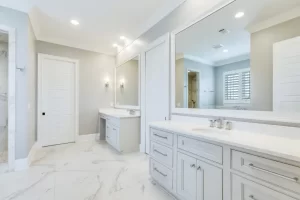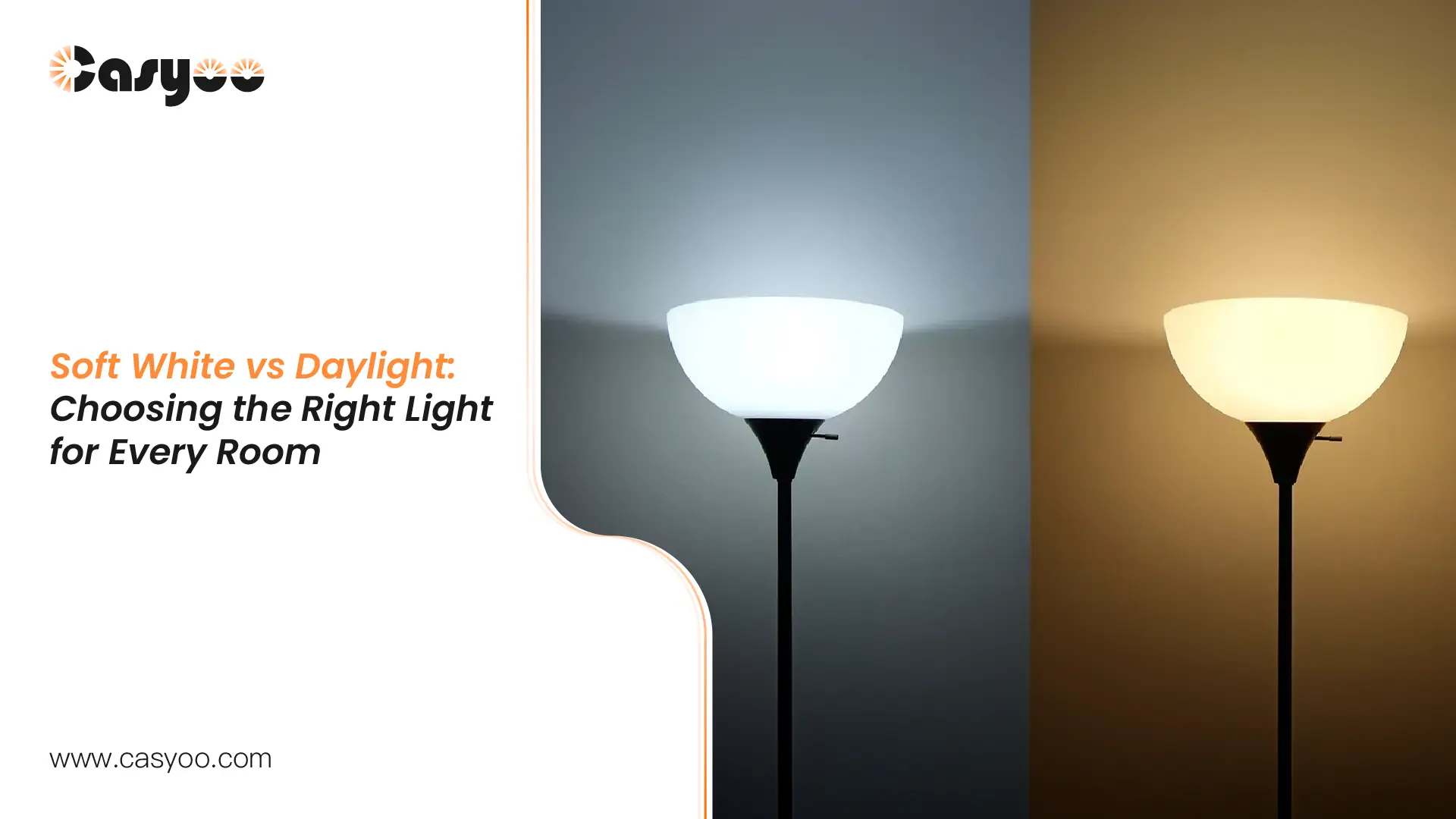With more and more traditional incandescent and halogen lamps being replaced by LED lights, people find the biggest difference is the color of the light. Some people prefer soft white light, while others want their light to look more like daylight. So what are the differences between soft white light and daylight, and what are the suitable applications for these two colors of light? For additional information about daylight vs soft white, read the following paragraphs!
Color temperature: to put it simply
Due to variations in color temperature, white light has different hues. The unit of color temperature is Kelvin (K), which indicates the color of light emitted by a standard object at a certain high temperature. 3000 K light has the color of the standard object at a temperature of 3000 K.
For example, when a block of iron is heated to a certain temperature, the gray-black block of iron will begin to turn red and become shiny. If it is heated further, the color will change from red to light red to orange-yellow. If the block of iron does not melt, after further heating, we will see its color change from orange-yellow to white to blue-white. Generally speaking, the more red the color, the lower the color temperature; the more white or blue-white the color, the higher the color temperature.
Another example is the sun, since the color temperature of sunlight changes with time. The sun appears orange-red at sunrise, and this is the moment when the color temperature is at its lowest. At noon, the sunlight appears yellow-white or white, which is the typical daylight color. The color temperature becomes higher at this time, about 5500K, and then begins to decrease.
Influence of soft white vs daylight on our minds and bodies
Psychological impact
The color temperature of soft white is around 3500K, and that of daylight is 5500K. Compared with daylight, soft white looks more yellowish. Maybe you have found yourself having different feelings under these two kinds of light, and it is actually confirmed by many researchers. According to the article written by Chen R, Tsai M-C, and Tsay Y-S., when the color temperature is between 4000K and 5500K, people will feel refreshed and less melatonin will be produced. In an environment with a color temperature of about 3000K, people will feel more at ease. Some interior decor enthusiasts also think that soft white light is more romantic while daylight looks clean and sterile.
Soft white vs daylight: which is better for eyes?
Eye fatigue: The light with a low color temperature cannot reflect the original color of objects like the daylight. Working under such light will cause eye fatigue and lead to decreased vision. Fang Y, Liu C, Zhao C, Zhang H, Wang W, and Zou N.’s article also proved through experiments that people are more fatigued under 3000 K light than under 4000 K light.
Blue light: There is more blue light in daylight than in soft white light. Short-wave blue light has high energy and can produce free radicals on the retina, causing myopia and other visual impairments. But for ordinary people’s daily use, the harm of LED blue light to people is relatively limited.
In fact, the impact of light on the eyes is determined by a variety of factors, such as brightness, color rendering, flicker, and uniformity of the light. Factors like brightness have a greater impact on the eyes than color temperature. By choosing a reliable manufacturer with quality certification and consulting in detail before purchasing, you can avoid buying harmful LED lights with unreasonable lighting design.
Soft white vs daylight: which should I choose for each room?
Bedroom
It is advisable to choose soft white lighting in the bedroom, which will make the room more cozy and won’t affect your sleep.


Living room
If you often watch TV with your family in the living room, you can choose soft white light to create a comfortable atmosphere. You can decide the color temperature according to your own preference, or you can purchase the LED lights whose color temperature can be changed, arrange the circuit, and then use the switch to apply different color temperatures.
Dining room
To create a relaxed and comfortable environment, dining rooms typically use soft white lighting. Besides, lights with a lower color temperature can make the food look more delicious.
Kitchen
It is better to use daylight lighting in the kitchen. If the light looks too cold or too warm, it will affect people’s judgment of food while cooking.
Bathroom
You can apply daylight lighting in the bathroom, which makes the space look clean and sterile. When you wash your face and then look in the mirror, you will look better under daylight than under soft white light.


Study room
Use daylight lighting to help you improve your efficiency while reading, studying, and working, and keep your mind clear.
Storage room
Choose daylight lighting to better distinguish the colors of different things and find what you want quickly.
Children’s room
Using soft white lighting can ensure your child’s sleep quality.


Home gym
Choosing bright daylight lighting can make people more excited and focus on working out.
Workshop
Daylight lighting helps you make accurate judgments while working.
Garage
Use daylight lighting to make your dark garage look bright.
Game room/home theater
For these two rooms, we recommend colorful RGB LED lights to provide an immersive audio-visual experience.
Other important points you need to know for indoor lighting
Avoid glare
Adjust the lighting angle to make the light highlight the center of the object as much as possible to avoid glare. Many people like to install a lot of recessed lights on the ceiling, which is actually not advised, because these lights may be likely to cause bright spots and glare. You can use some indirect lighting indoors. When designing, you can place hidden lights around the ceiling, and then arrange task lighting for reading or other activities. Indirect lighting makes people feel the most comfortable and relaxing, while direct and very bright light makes you feel tired.
Choose lamps with high color rendering
Lights with high CRI reflect the original color of an object. For example, you will find your high-end furniture with very bright colors change its color under light with low CRI, which makes them look inferior. Or for dining lighting, if the color rendering is low, the food will look unappetizing.
Clearly define the distance between the floor and the ceiling
If you want to use main lights, there are generally three types: ceiling lights, chandeliers, and semi-flush mount lights. Measure the distance between the floor and the ceiling in advance so that you can effectively decide what kind of lamps to use. For instance, it is not advised to use a chandelier if the height is less than 2.7 meters since it could be too oppressive.
Conclusion
When you are hesitant about whether you should choose soft white or daylight lights, you can consider psychological and physiological effects. We also recommend which color to choose for every room of your house. Finally, remember the 3 important points when planning indoor lighting. Casyoo provides different types of LED lights, and you can contact us for consultation at any time! Here is a video that briefly explain color temperature. You can watch it for a better review!




